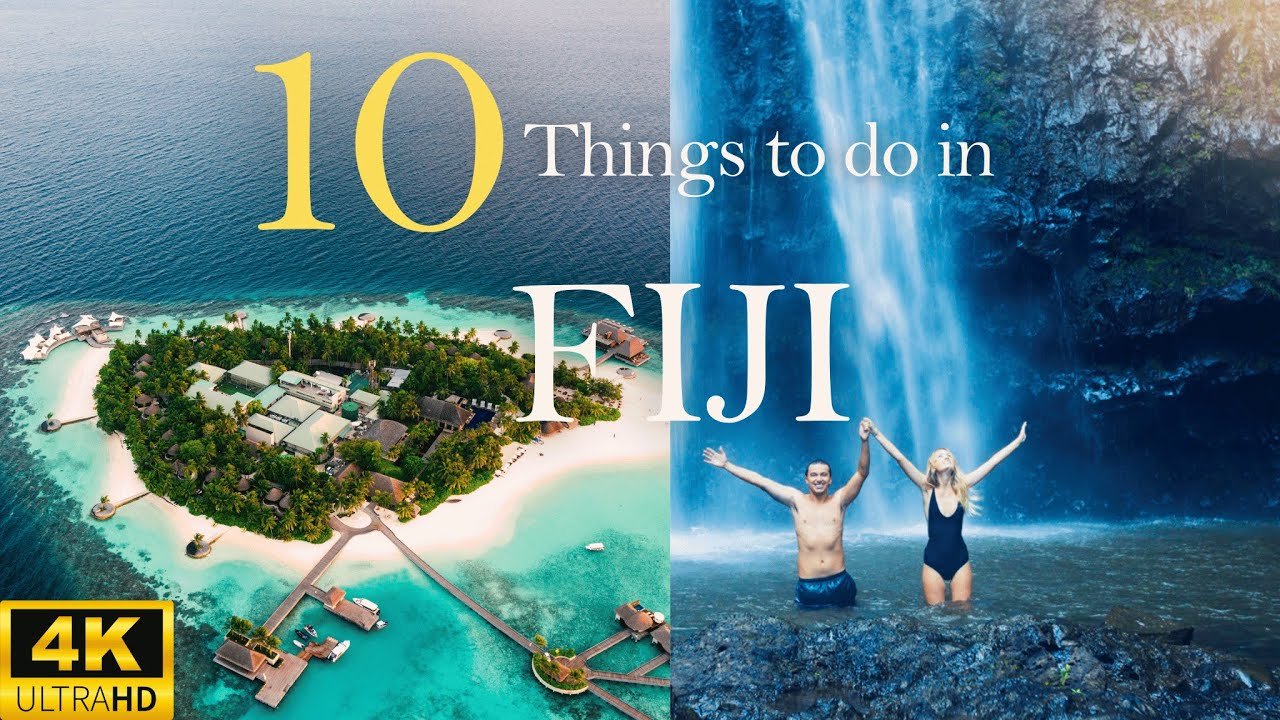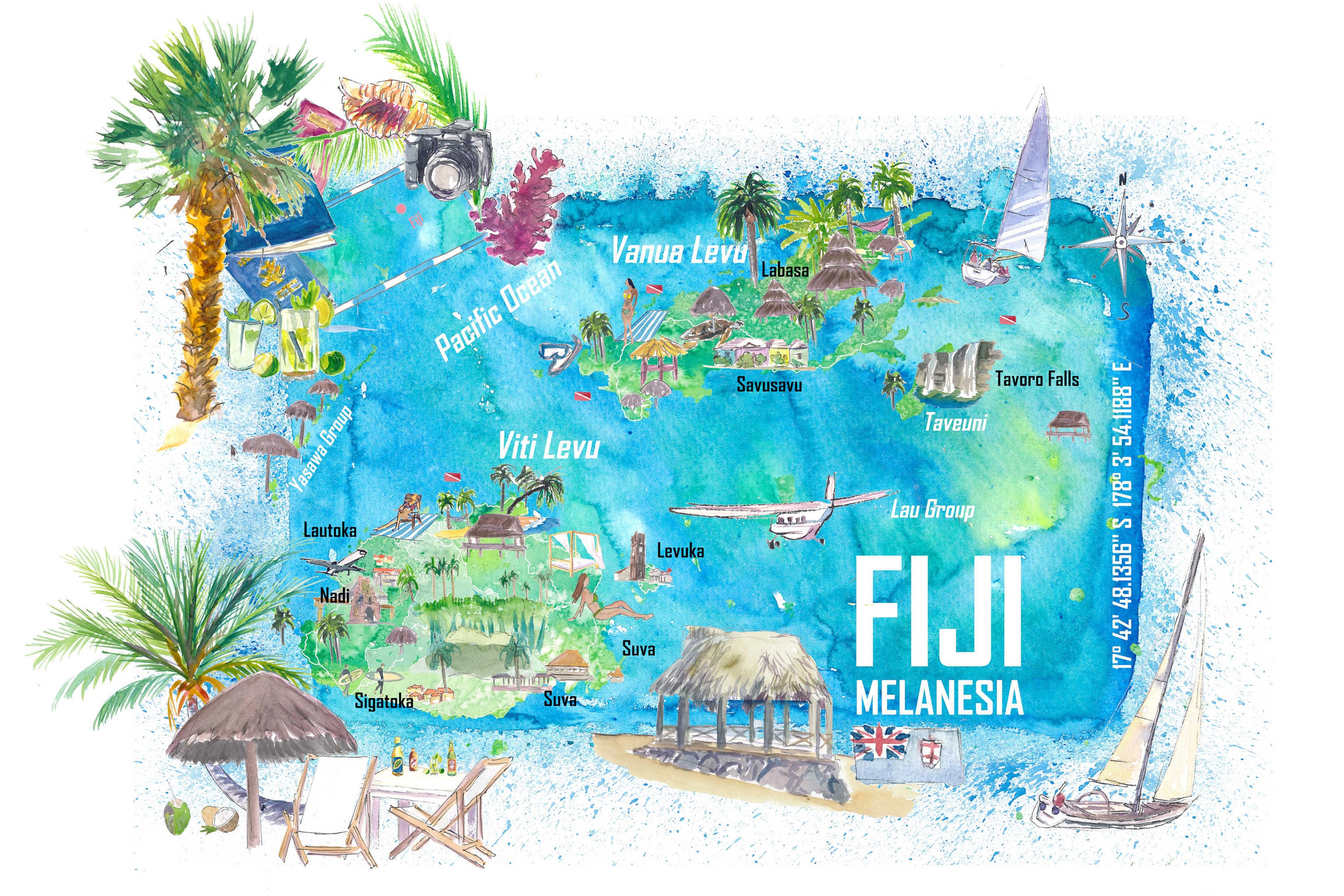
Whisper the word "Fiji," and the mind immediately conjures images of impossible turquoise waters, powdery white sand beaches fringed with swaying palms, and a warmth that extends far beyond the tropical sun. This archipelago of more than 330 islands, scattered like jewels in the vast blue of the South Pacific, is the quintessential paradise. But beyond its postcard-perfect exterior lies a nation with a deep, complex history, a vibrant living culture, and a spirit of hospitality so genuine it has its own name: the "Bula Spirit."
Fiji is more than just a fly-and-flop destination for honeymooners. It’s an adventure playground for divers and surfers, a cultural haven for inquisitive travelers, and a welcoming retreat for families. Whether you dream of sipping cocktails in an overwater bungalow, swimming with majestic manta rays, or simply unplugging on "Fiji Time," this comprehensive guide will help you navigate your journey to this unforgettable corner of the world.
A Glimpse into Fiji’s Rich History and Culture

Related Articles about Bula! Your Ultimate Guide to Traveling in the Heart of the South Pacific:
- Venice: A Labyrinth of Wonders, History, and Unforgettable Experiences
- Buenos Aires: A Tango of Culture, History, and Unforgettable Experiences
- Morocco: A Traveler’s Guide to the Kingdom of a Thousand Colors
- Lombok: Beyond Bali’s Shadow – A Paradise Unveiled
- ¡Hola España! Your Ultimate Guide to an Unforgettable Spanish Adventure
To truly appreciate Fiji, one must understand its story. The islands were first settled around 3,500 years ago by the Lapita people, ancestors of modern Polynesians and Melanesians. For centuries, a fierce and proud warrior culture flourished, marked by tribal warfare and, famously, ritual cannibalism—a practice that earned Fiji the moniker "the Cannibal Isles."
European contact began in the 17th century with Dutch explorer Abel Tasman, but it wasn’t until Captain William Bligh’s epic journey after the Mutiny on the Bounty in 1789 that the islands were charted more thoroughly. The 19th century brought traders, missionaries, and colonial powers. After years of internal conflict, Chief Ratu Seru Epenisa Cakobau ceded the islands to Great Britain in 1874 to bring peace and stability.
A pivotal moment in Fijian history was the arrival of indentured laborers from India between 1879 and 1916. Brought by the British to work the sugarcane plantations, this community, now known as Indo-Fijians, became an integral part of the nation’s fabric. Today, their influence is seen everywhere, from the vibrant Hindu temples to the delicious curries that are a staple of the local cuisine.
Fiji gained independence in 1970, and today it thrives on a unique blend of indigenous iTaukei, Indo-Fijian, and European influences. The cornerstone of the culture is the concept of community and family, best expressed through the all-encompassing greeting, "Bula." It means "hello," "welcome," and "life," and you will hear it accompanied by a brilliant smile wherever you go.
When to Go: Finding Your Perfect Fijian Season
Fiji’s tropical climate makes it a year-round destination, but it’s defined by two distinct seasons:
The Dry Season (May to October): This is peak tourist season for a reason. You can expect sun-drenched days, lower humidity, and comfortably warm temperatures (averaging 26-28°C or 79-82°F). It’s the ideal time for beach activities, diving, and hiking. The trade-off is higher prices for flights and accommodation and more crowded resorts.
The Wet Season (November to April): Also known as the "green season," this period is characterized by higher humidity, warmer temperatures, and short, heavy afternoon downpours. The landscape is incredibly lush and waterfalls are at their most spectacular. While this is the low season with better deals, it’s also the cyclone season, with the highest risk from January to March.
Shoulder Seasons (April, May, October, November): These months often represent the best of both worlds, offering a great balance of pleasant weather, fewer crowds, and more reasonable prices.

Getting There & Getting Around: Navigating Paradise
International Travel:
Most visitors arrive at Nadi International Airport (NAN) on the western side of the main island, Viti Levu. It’s the primary hub for international flights, serviced by Fiji Airways (the national carrier), as well as Qantas, Air New Zealand, Virgin Australia, and several others, with direct flights from Australia, New Zealand, the USA, and parts of Asia. Citizens of many countries, including the USA, UK, Australia, and EU nations, do not require a visa for stays up to four months.
Getting Around:
Navigating Fiji’s 330 islands is part of the adventure.
- Ferries: For the popular Mamanuca and Yasawa island groups, high-speed catamarans are the way to go. South Sea Cruises operates the Malolo Cat for the Mamanucas, while Awesome Adventures Fiji runs the Yasawa Flyer, a hop-on, hop-off service that is a lifeline for the region’s resorts and villages.
- Domestic Flights: To reach more distant islands like Taveuni (the Garden Island) or Vanua Levu, domestic flights with Fiji Link (a subsidiary of Fiji Airways) from Nadi or Suva are the most efficient option.
- On Viti Levu: On the main island, you have several choices.
- Rental Cars: Renting a car offers the most flexibility to explore the Coral Coast and interior highlands. Remember, Fijians drive on the left.
- Local Buses: For an authentic and incredibly cheap experience, hop on a local bus. With their open-air windows and lively music, they are a cultural experience in themselves.
- Taxis and Private Drivers: Taxis are plentiful in towns, but always ensure the meter is used or agree on a fare beforehand. Hiring a private driver for a day is a great way to see the sights without the stress of navigating.
Where to Stay: From Budget Bure to Lavish Luxury
Fiji’s accommodation options are as diverse as its islands.
- Luxury Resorts: Concentrated on Denarau Island (a gated enclave near Nadi) and scattered across private islands in the Mamanucas and Yasawas, these resorts offer world-class spas, infinity pools, and overwater bungalows. Think Likuliku Lagoon Resort or the Six Senses Fiji.
- Mid-Range & Family-Friendly Resorts: The Coral Coast on Viti Levu is famous for its large, all-inclusive style resorts that cater brilliantly to families, with fantastic kids’ clubs, multiple pools, and a wide array of activities.
- Boutique & Adults-Only Retreats: For romance and seclusion, seek out the smaller, intimate resorts in the Yasawas or on Taveuni. These often focus on tranquility, fine dining, and personalized experiences.
- Budget & Backpacker Options: The Yasawa Islands are a backpacker’s paradise, offering affordable dorms and simple traditional huts known as bures. The "Bula Pass" for the Yasawa Flyer makes island-hopping on a budget a breeze.
- Village Homestays: For a truly immersive cultural experience, consider a homestay. You’ll live with a local family, share their meals, and participate in daily life. It’s a humbling and enriching way to see the real Fiji, but be sure to bring a sevusevu (a gift of kava root) for the village chief.
Top Attractions & Unforgettable Experiences
While relaxing on the beach is a must, Fiji offers a wealth of activities.
- The Mamanuca Islands: Just a short boat ride from Nadi, this chain is home to some of Fiji’s most iconic resorts. Here you can snorkel in crystal-clear lagoons, surf world-famous breaks like Cloudbreak, and visit Monuriki Island, where the movie Cast Away was filmed.
- The Yasawa Islands: Further north, these islands are more remote and dramatic, with rugged volcanic peaks and pristine beaches. The main draws are swimming with manta rays (typically May-October) in the channel off Drawaqa Island and exploring the mystical Sawa-i-Lau Caves.
- Taveuni, The Garden Island: A haven for nature lovers, Taveuni is lush, green, and untamed. Hike through Bouma National Heritage Park to a series of stunning waterfalls, slide down the natural Waitavala Water Slide, and dive the world-renowned Rainbow Reef, a kaleidoscope of soft corals. You can also stand with one foot in today and the other in yesterday at the International Date Line marker.
- Viti Levu’s Adventure Coast: The area around Pacific Harbour is known as Fiji’s adventure capital. Here you can experience one of the world’s best shark dives (no cages!), go whitewater rafting on the Navua River, or zipline through the rainforest canopy.
- Cultural Immersion: No trip is complete without engaging with Fijian culture.
- Participate in a Kava Ceremony: Kava (yaqona) is a mildly narcotic drink made from the root of a pepper plant. It’s a cornerstone of Fijian society. If invited to a ceremony, accept with a clap (cobo), drink the bowl in one go, and clap three more times.
- Experience a Lovo Feast: This is a traditional Fijian banquet where food (meat, fish, and root vegetables) is wrapped in banana leaves and slow-cooked for hours in an underground oven. The result is a smoky, succulent, and delicious meal.
- Witness a Meke: A meke is a vibrant performance of traditional song and dance that tells the stories of Fiji’s history and legends.
Essential Travel Tips: Know Before You Go
- Embrace "Fiji Time": Life in Fiji moves at a relaxed, unhurried pace. Don’t expect everything to run on a strict schedule. Let go, slow down, and enjoy the moment.
- Currency: The local currency is the Fijian Dollar (FJD). Credit cards are widely accepted in resorts and larger towns, but it’s essential to carry cash for local markets, taxis, and village visits.
- What to Pack: Lightweight clothing, swimwear, a hat, sunglasses, and strong, reef-safe sunscreen are essential. Also pack insect repellent, a reusable water bottle, and a sarong (sulu), which is invaluable for covering up when visiting villages.
- Village Etiquette: When visiting a traditional village, respect is paramount. Dress modestly (cover your shoulders and knees), remove your hat and sunglasses, and never touch anyone’s head. Always bring a sevusevu to present to the village chief upon arrival.
- Health & Safety: Drink bottled or filtered water. The sun is powerful, so stay hydrated and protected. Fiji is generally a safe country, but take standard precautions with your belongings.
- Connectivity: Wi-Fi is available in most hotels and resorts but can be slow and expensive. Consider buying a local SIM card from Vodafone or Digicel at the airport for affordable and reliable data.
Fiji is a destination that captures the heart and soothes the soul. It’s a place where the vibrant underwater world is matched only by the warmth of its people. From the first heartfelt "Bula!" to the last lingering sunset, a journey to Fiji is more than just a vacation—it’s an invitation to experience life at its simplest, most beautiful, and most joyful.





